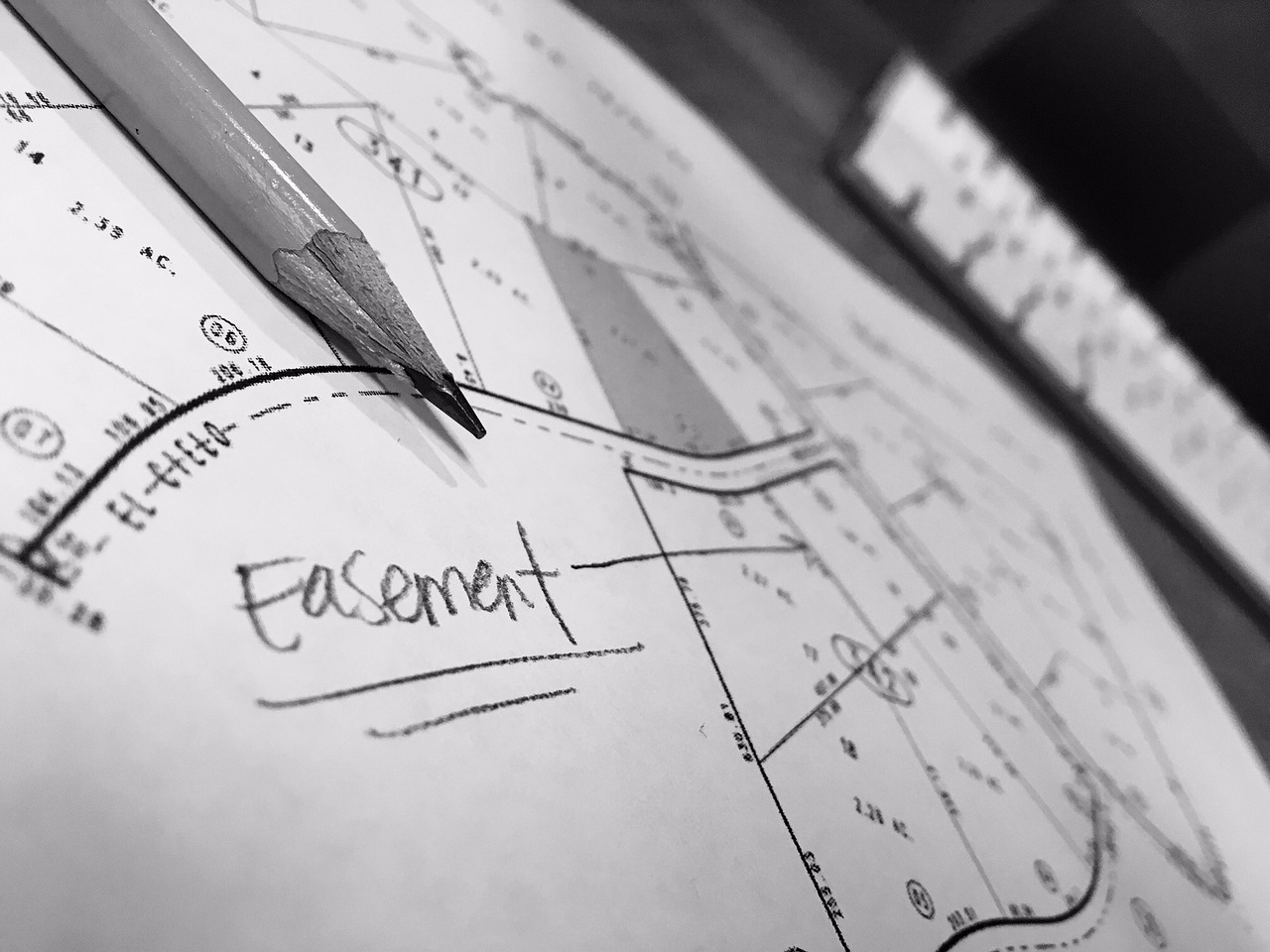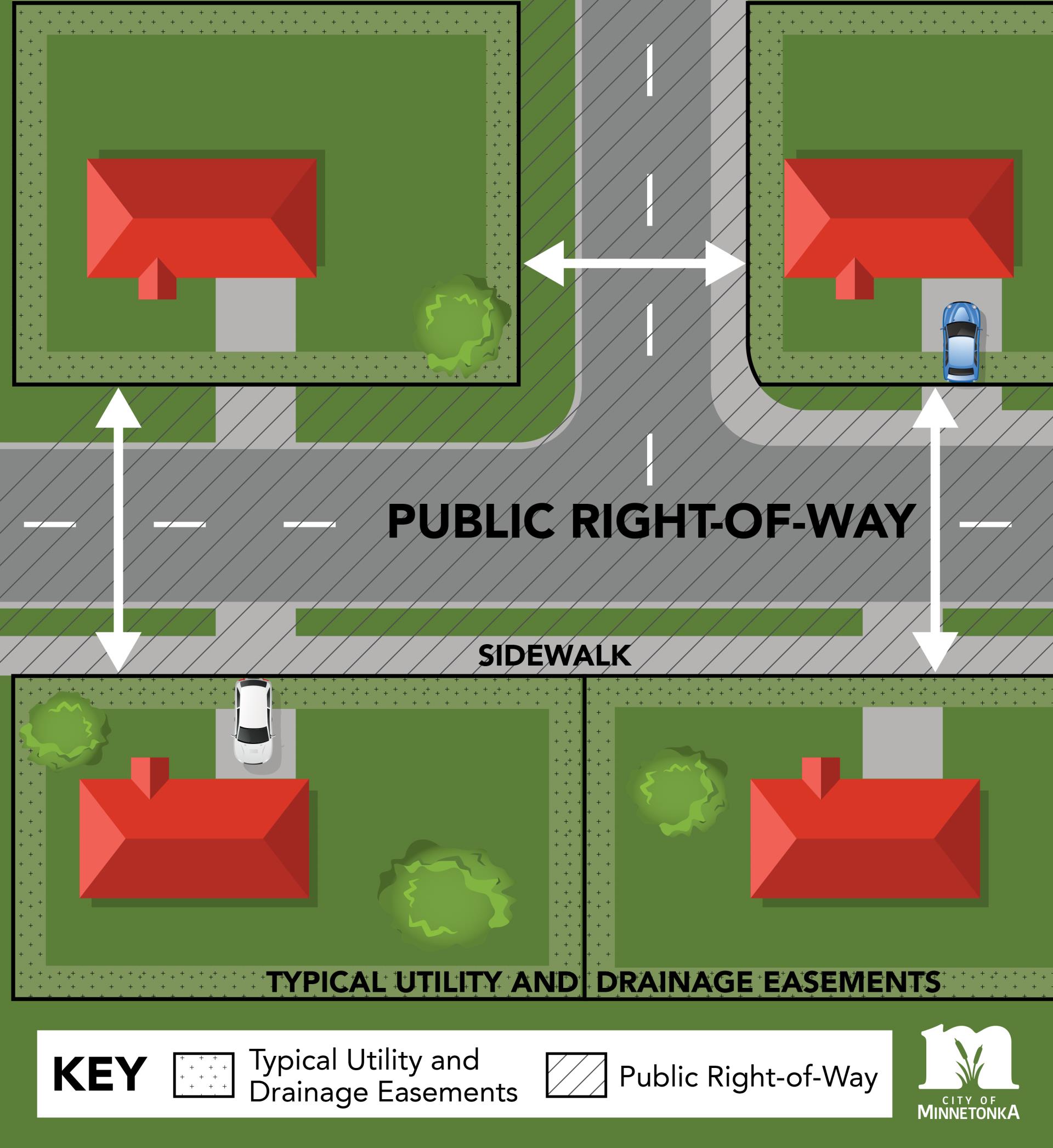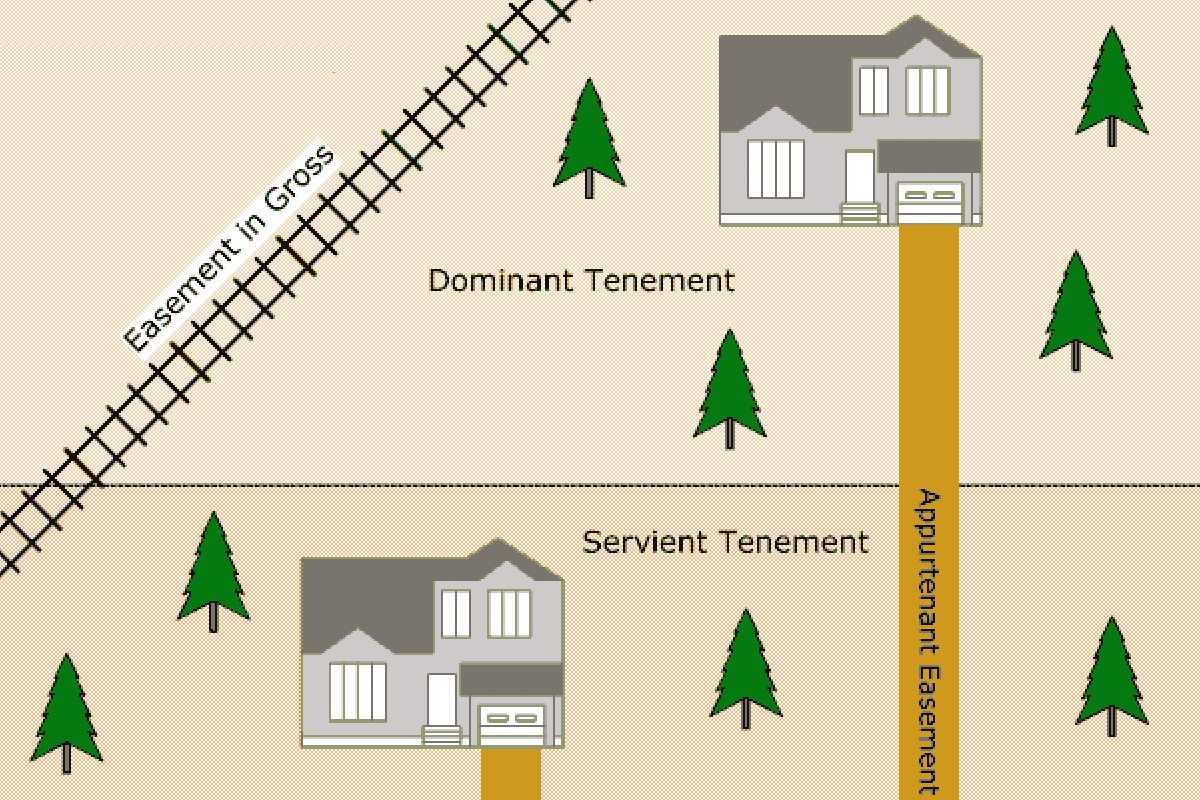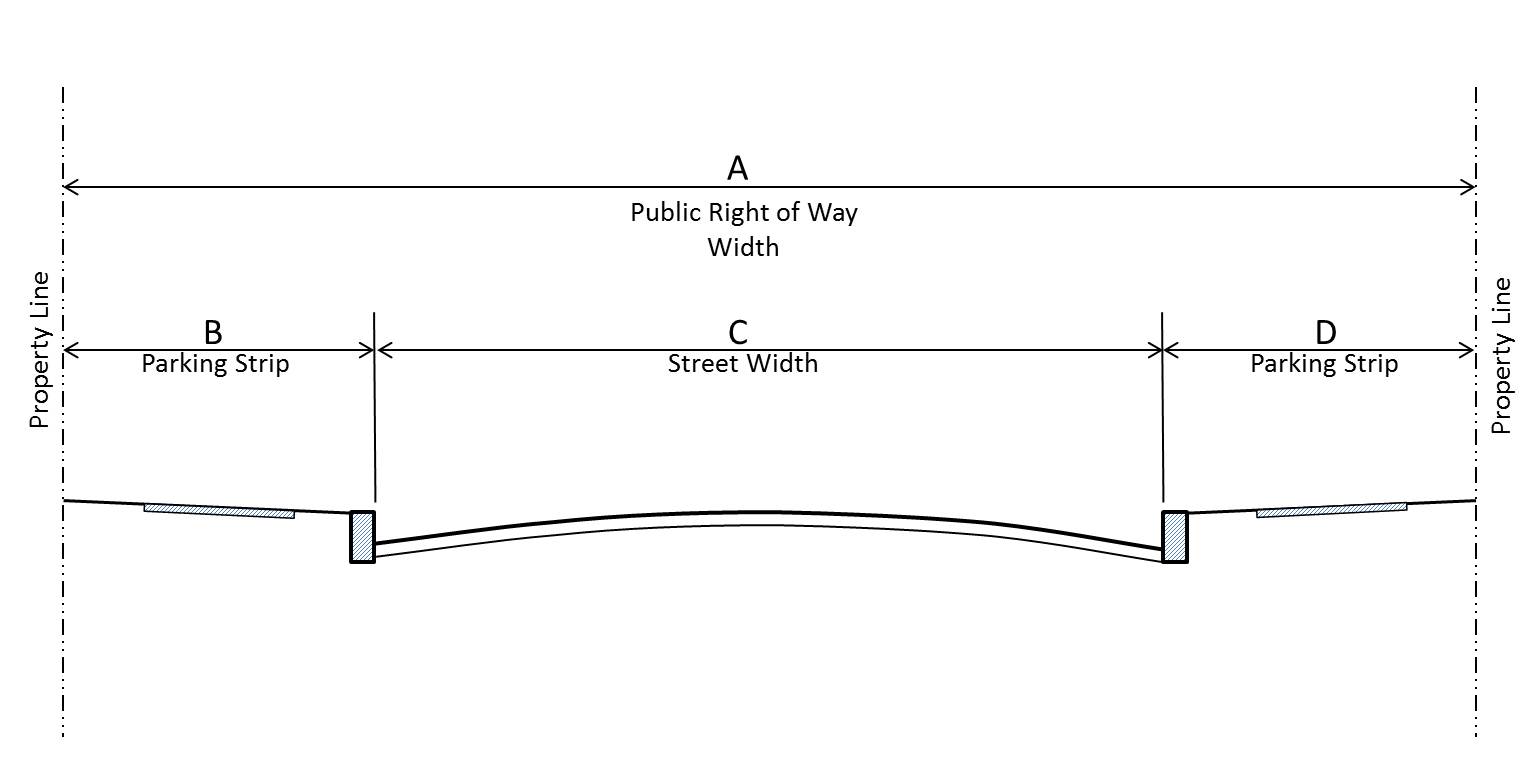What is a Right of Way (ROW)?
In its simplest form, right-of-way property refers to the land or easement granted to an individual or entity to access or pass through a specific area. This access is typically granted by the property owner, allowing others to use or traverse the land for various purposes. It can be found in both urban and rural areas and is commonly associated with transportation infrastructure, such as roads, highways, railways, and even public pathways.
Understanding the significance of right-of-way property is crucial, as it directly impacts the development, maintenance, and functionality of our transportation systems. Without this designated space, the efficient movement of vehicles, pedestrians, and other modes of transportation would be significantly hindered, leading to congestion, delays, and potential safety hazards.

Beyond its role in transportation, right-of-way property also holds importance in other sectors, such as utilities and telecommunications. Utility companies often require access to certain areas to install and maintain essential infrastructure for power lines, water pipes, and communication networks. Additionally, telecommunications providers rely on right-of-way property to lay cables and install equipment that enables our interconnected world.
What is Right-of-Way and Why is it Important?
Right-of-way plays a vital role in ensuring the smooth functioning of infrastructure and the overall development of communities. It allows for the construction and maintenance of roads, sidewalks, bike lanes, and other transportation networks that facilitate the movement of people and goods. Additionally, it enables utility companies to install and maintain power lines, water pipes, sewer systems, and other essential services that support daily life.
In practical terms, imagine the chaos and inconvenience that would ensue if there were no designated right-of-way for roads. Traffic would become unmanageable, and access to essential services like hospitals, schools, and businesses would be severely disrupted. Similarly, without a properly established right-of-way for utility lines, power outages, and water supply issues would become more frequent and challenging to resolve.
From a legal standpoint, understanding the right-of-way is crucial for property owners. When purchasing or selling a property, it is essential to be aware of any existing right-of-way that may affect the land’s use, access, or development potential. In some cases, property owners may need to grant an easement, which is a legal agreement allowing others to use a portion of their property for specific purposes, such as a driveway or utility access.
Right-of-Way vs. Easement
Understanding the differences between right-of-way and easements can be a bit tricky, but don’t worry! We’re here to help provide you with some key insights on these two common legal terms. So grab a cup of your favorite beverage and settle in for an entertaining story of right-of-way and easements.
Right-of-Way
When it comes to land rights, it’s hard to find one as tough and determined as the right-of-way. This type of land access allows others to cross over private property without actually owning it. Think of it like the Lone Ranger—a figure that comes in, gets the job done, and rides off into the sunset.
The Easement
The easement is like the trusty sidekick to the right-of-way. It protects the owner from intrusive behavior without infringing on the rights of those who need access. This allows them to use the land while protecting the safety and security of the homeowner. We like to think of this relationship as a protective shield that ensures no one goes astray.
So, Who Wins?
Both right-of-way and easements have their place in the world, bringing together different elements of land law and providing both access and security to those who need it. In the end, these two laws make sure everyone can get what they need from their land without any trouble.
Types of Right-of-way Property
When it comes to understanding ownership of right-of-way property, it’s essential to familiarize yourself with the different types that exist. Right-of-way properties can vary in terms of their purpose and usage, and each type has its own unique characteristics.
Public Right-of-Way
This type of right-of-way property is owned by the government or public entities and is designated for public use. It typically includes roads, highways, sidewalks, and public utilities such as water or sewer lines. These areas are maintained and regulated by the relevant authorities, ensuring safe and efficient access for the general public.

Private Right-of-Way
In contrast to public right-of-way, private right-of-way properties are owned by individuals or private entities. These properties provide access to specific individuals or groups for the purpose of reaching their own properties or other designated areas. Examples include shared driveways, pathways, or easements that grant access to neighboring properties.
Easements
Easements are a type of right-of-way that grants limited access or usage rights to a specific person or entity. They may exist on both public and private properties and are often established for specific purposes, such as granting utility companies the right to access utility lines located on private land. Easements can be permanent or temporary, and the rights and restrictions associated with them are typically outlined in legal agreements.

Railroad Right-of-Way
Railroad rights-of-way refer to properties owned by railroad companies for the purpose of operating and maintaining railways. These properties are essential for the transportation of goods and passengers and are subject to specific regulations and laws governing their use and maintenance.
Ownership Rights and Responsibilities
Owning a property with a right-of-way does not necessarily grant full ownership of the designated area. Instead, it grants the owner certain rights and privileges to use the land for specific purposes, such as accessing their own property or allowing others to pass through. This means that while you may have the right to use the right-of-way, the actual ownership of the land itself may lie with another party or entity.

In some cases, right-of-way ownership is shared among multiple parties. This can happen when neighboring properties have shared driveways or common access points. It’s essential to clearly define and document these shared rights and responsibilities to avoid any conflicts or misunderstandings down the line.
Your responsibilities include maintaining the area, ensuring its accessibility, and respecting any limitations or regulations imposed by local authorities. It’s important to familiarize yourself with any applicable laws, permits, or restrictions that may govern the use and maintenance of the right-of-way.
You’re also responsible for communicating and collaborating with other property owners who may also have rights to the same right-of-way. Establishing clear lines of communication and addressing any concerns or disputes promptly can help maintain a harmonious and efficient use of the shared space.
How to determine who owns the right-of-way property
Determining the ownership of right-of-way property can be a complex task, but it is crucial for understanding the rights and responsibilities associated with the land. Whether you are a homeowner, a developer, or a government agency, knowing who owns the right-of-way property is essential for making informed decisions and avoiding disputes.
Property history.
This can involve examining deeds, surveys, and other relevant documents that provide information about the property’s past ownership and any recorded easements or rights-of-way.
Government records.
It is also important to consult local government records, such as county or city property records, to gather additional information about the right-of-way property. These records may provide details about any official designations, easements, or agreements related to the property.

Title company
In some cases, it may be necessary to engage the services of a professional land surveyor or title company. These experts can conduct a thorough survey of the property boundaries and review historical records to determine the ownership of the right-of-way property.
Jurisdiction
Ownership of right-of-way property may vary depending on the jurisdiction and specific circumstances. For example, in some cases, the government or a public agency may own the right-of-way property for transportation or utility purposes. In other instances, private individuals or entities may own the property but have granted an easement or right-of-way to others for specific purposes.
Common challenges and disputes related to right-of-way property
When it comes to right-of-way property, various challenges and disputes can arise, causing headaches for property owners. Understanding these common issues can help you navigate potential conflicts more effectively.
- Encroachments: One of the most common challenges involves encroachments, where a neighboring property or individual extends their use or physical structure onto the right-of-way property. This can lead to disputes over boundaries and access rights.
- Unauthorized use: Another issue arises when unauthorized individuals or entities use the right-of-way property for their own purposes without proper permission or legal access. This can create conflicts over liability, maintenance, and control of the property.
- Maintenance responsibilities: Disagreements often arise over the responsibility for maintaining the right-of-way property. Property owners may argue about who should bear the costs of upkeep, repairs, and any necessary improvements.
- Access restrictions: In some cases, access to the right-of-way property can be restricted or obstructed. This can occur due to physical barriers, such as fences or gates, or legal restrictions imposed by adjacent property owners. Resolving these access issues requires careful negotiation and adherence to relevant laws and regulations.
- Easement disputes: Disputes can also arise regarding the extent and scope of easements granted on the right-of-way property. Conflicting interpretations and conflicting rights can lead to legal battles and potential limitations on property use.
Steps to Resolve Ownership Issues
When it comes to right-of-way property, ownership issues can often arise, causing confusion and potential legal disputes. Resolving these issues is crucial to ensure a smooth and clear path for everyone involved. Here are some steps you can take to clear the path and resolve ownership issues:
- Research the history: Begin by conducting thorough research on the property’s history. This may involve reviewing old land records, deeds, surveys, and any relevant documentation. Understanding the chain of ownership will provide valuable insights into any potential disputes.
- Consult legal experts: If you encounter complexities or uncertainties during your research, it’s wise to seek guidance from legal professionals specializing in real estate law. They can provide expert advice, review documents, and help navigate through any legal hurdles that may arise.
- Communicate with stakeholders: Identify all parties involved in the ownership dispute and initiate open and transparent communication. This could include neighboring property owners, local government authorities, and any other relevant individuals or organizations. By discussing the matter directly, you may uncover additional information or potential solutions.
- Mediation or negotiation: In some cases, it may be beneficial to engage in mediation or negotiation with the conflicting parties. A neutral mediator can facilitate productive discussions and help find mutually agreeable resolutions. This approach can save time, and money, and maintain amicable relationships.
- Obtain a professional survey: To establish a clear understanding of property boundaries, consider hiring a professional surveyor. Their expertise will provide accurate measurements and documentation, which can help resolve ownership disputes based on factual evidence.
- Document and record: Throughout the process, keep meticulous records of all communications, agreements, and any actions taken. This documentation will be valuable for future reference and can serve as evidence if legal proceedings ever arise.
- Legal action as a last resort: If all attempts at resolution fail, you may need to consider legal action. Consult with your attorney to determine the best course of action based on the specific circumstances. Litigation should always be the last resort, as it can be time-consuming, costly, and potentially damage relationships.
Surveys and Professional Assistance
When it comes to understanding the ownership of right-of-way property, surveys, and professional assistance play a crucial role. The intricate nature of property boundaries and the complexities involved in determining ownership requires the expertise of surveyors and other professionals in the field.
Surveys are conducted to accurately establish the boundaries of a property and identify any encroachments or overlaps. They provide a visual representation of the land, including its dimensions and any existing structures or improvements. This information is essential in determining the extent of right-of-way ownership and ensuring compliance with local regulations.

Professional assistance is highly recommended when dealing with right-of-way property matters. Experienced surveyors, land planners, and attorneys can help navigate the legal and technical aspects involved. They have the knowledge and resources to interpret survey data, research historical records, and analyze relevant documentation.
These professionals can also provide valuable insights into local zoning ordinances, easement rights, and restrictions that may impact right-of-way ownership. Their expertise can help property owners make informed decisions, resolve disputes, and ensure compliance with legal requirements.
In addition to their technical expertise, surveyors and professionals in the field often have established relationships with local authorities and agencies. This can be beneficial when dealing with permits, approvals, or other administrative processes related to right-of-way ownership.
FAQs about Right-of-way Property
What is the right-of-way in Texas?
The right-of-way in Texas is an area where the public has the legal right to pass through or use privately owned land. It may be used for a variety of reasons, including access to roads, utility lines, and more.
What is the easement of the right-of-way in Texas?
An easement of the right-of-way is essentially a written agreement between two parties that grants one party permission to use another party’s land for a specific purpose (such as a road or utility line). This agreement must be agreed upon by both parties and made official with the appropriate paperwork.
How do I find property lines in Texas?
To find out property lines in Texas, you can check the county clerk’s office for any records related to your property. Additionally, hiring a licensed surveyor can help you pinpoint your exact property lines.
What is the legal description of property in Texas?
A legal description of the property in Texas includes information such as its address, owner’s name, acreage, tax ID number, and more. This information can be found on the deed or lease paperwork.
Can a property owner block an easement in Texas?
Generally no—property owners cannot block an easement in Texas unless they are able to demonstrate that doing so would be in the general interest of the community. However, it is important to note that this varies from city to city.
What is the difference between an easement and a right-of-way in Texas?
An easement is a legally binding agreement between two parties that allows one party access to another party’s land for a specific purpose. On the other hand, a right-of-way is an area where the public has the legal right to pass through or use privately owned land.
Can you build a fence on an easement in Texas?
Generally no—building a fence on an easement is generally not allowed as it restricts public access and could impact the free flow of traffic. However, if both parties have agreed to build a fence, then it is possible.
How wide is an easement in Texas?
There is no standard width for an easement in Texas. The width of the easement will vary depending on the purpose of the easement and the agreement between both parties.
Who is responsible for maintaining an easement in Texas?
Generally, the party who owns the land on which the easement sits remains responsible for its maintenance. If both parties have agreed otherwise then that should be stated in the written agreement.
Can I remove my neighbor’s fence on my property in Texas?
No. Doing so would be considered trespassing and could result in legal action being taken against you. It is best to talk to your neighbor first before taking any drastic measures.
How close to a property line can you put a fence?
In general, fences that are built along property lines should be set back at least one foot from them. This rule may vary depending on local laws or agreements between neighbors though, so it is best to check with your local authorities before beginning any construction work.
What can you do if your neighbor encroaches on your property in Texas?
If your neighbor encroaches on your property without permission, you may need to contact an attorney to discuss your legal options. It is especially important to take action if your neighbor alters or damages your land in any way.
How do I see property lines on Google Maps?
Google Maps does not display exact property lines but it can help give you a better idea of where they might be located. You can zoom in for greater detail, and look for clues like street names, lot sizes, or nearby landmarks that can help you find your boundary lines.
What is the best app for finding property lines?
There are many apps available that can help you search for property lines. Popular ones include LandGlide Mobile App, MyProperty Line Finder App, and Boundaries App. Before downloading an app, make sure to read customer reviews and look into pricing plans to ensure that you find one that meets your needs.
How do I find out who owns the property next to me?
The easiest way to find out who owns the property next to yours is to search online using the address provided by your local assessor’s office. You can also contact them directly if you have any questions about ownership or zoning regulations.
Conclusion
We hope you found our blog post on understanding ownership of right-of-way property informative and helpful. Navigating the complexities of right-of-way ownership can be challenging, but by following the guidelines we provided, you can gain a clearer understanding of your rights and responsibilities.
Whether you are a property owner or a developer, knowing the ins and outs of right-of-way ownership is crucial for successful and compliant projects. Armed with this knowledge, you can confidently move forward in your real estate ventures, ensuring the path is clear for a smooth and legally sound development process.




